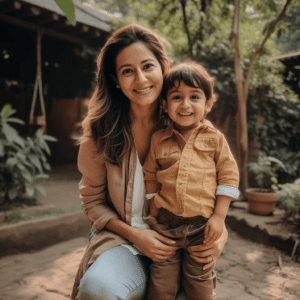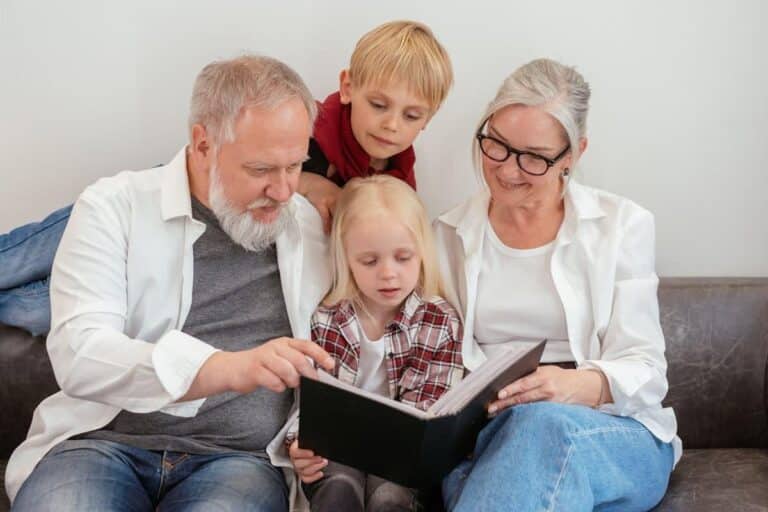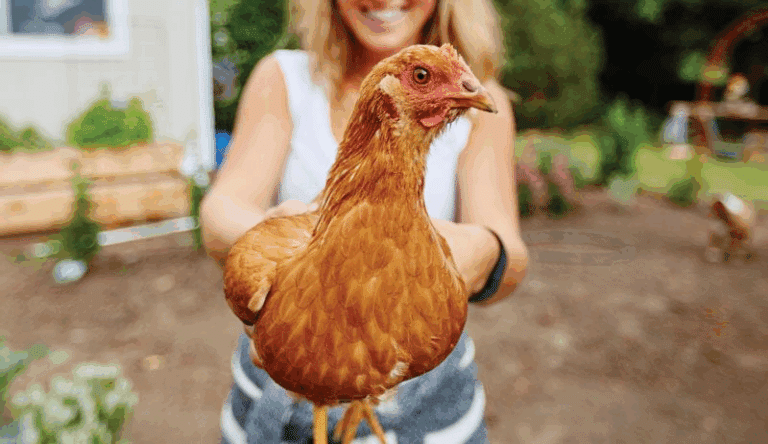Children in today’s society tend to believe that financial success and material possessions lead to happiness. Helping children understand that kindness matters more than money fosters fulfilment, empathy, and purpose.
This lesson requires no elaborate displays or expensive items. It begins with small gestures – a smile, a helping hand, or a simple donation to a good cause. The lessons children learn from these experiences will remain with them after their money runs out.
The following section presents specific actions to help children understand that kindness represents the most valuable asset in life.
Children Learn Most Effectively Through Observing Others Rather Than Receiving Direct Instructions
Children learn most effectively through observing the actions of others. Your behavior toward service staff, your reactions to people in need, and your expressions of gratitude reveal to children how you treat others.
Daily practice of empathy and compassion will cause your children to develop these same behaviors. Your actions of helping others without seeking rewards will teach children to understand that kindness exists to benefit others rather than to gain social status or public recognition.
You can teach children that doing good deeds brings inner satisfaction through statements like “We assist others because it creates positive feelings” and “The value of giving lies in the positive emotions we create for others.” The accumulation of these small lessons throughout time creates a lasting impact on their understanding.
The Handing Out of Money
The practice of giving includes both the act of sharing your time and effort and teaching children to expand their definition of giving beyond monetary contributions. Children normally associate giving with the act of attention and creative abilities.
Explain to your child that giving exists in different ways, including:
- The process of assisting another student who needs help with their schoolwork.
- Younger siblings can receive your toys when you decide to share them.
- A student should write appreciation letters to their teachers.
- The donation of outgrown clothing items to a nearby shelter serves as an act of giving.
You will demonstrate to your children that everyone possesses valuable resources that they can share with others through various forms of generosity.
Encourage Emotional Awareness
Empathy serves as the foundation for kindness because it enables people to sense and worry about the appearance of sadness. You should ask them what action would bring them comfort. Children develop emotional intelligence through this practice of understanding the emotions of others. Teach your child to identify emotions in others and develop appropriate responses.
When a friend because it helps them understand how their emotions influence their actions.
The development of natural empathy leads to automatic kindness in people. Children assist others because they truly care about their well-being rather than following instructions.
Establish Kindness as a Family Tradition
Establish kindness as a regular practice that your family will perform together. Select a basic routine that repeats, such as writing gratitude notes each week, volunteering once a month, and assisting neighbors with their grocery shopping.
Each family member should share their acts of kindness from the previous week during dinner or family meetings. The group should honor their collective achievements, no matter how minor they seem. Normal generosity practices will transform into permanent characteristics of your children’s personality.
The practice of gratitude should replace the habit of comparing oneself to others.
The development of kindness faces challenges when people focus on comparing themselves to others. Teach your children to focus on their current possessions instead of desiring things that belong to others.
Encourage young children to keep a gratitude journal, writing or drawing something they’re thankful for each day. Through time, children understand that abundance exists as a feeling rather than as a product of purchase.
The practice of gratitude creates a natural response of giving back to others. Children who understand their good fortune tend to distribute their time, energy, and compassion to others.
Show the Impact of Kindness
Children need to witness the results of their actions whenever it becomes possible. When you donate a toy to someone, you should explain who will end up receiving it. When children volunteer, you should explain how their actions created happiness for the people they helped.
The process of receiving feedback creates a connection between doing good deeds and experiencing happiness. Through their actions, children understand their efforts to create meaningful changes in the world.
Create a “kindness board” to track your family’s small good deeds because it serves as a visual reminder of your accomplishments in helping others. The practice of helping others creates achievements that deserve celebration. The purpose is to prove that money does not represent the complete picture of life. The true value of life emerges from meaningful relationships and life purpose, and deep affection.
Children who understand that their actions matter more than material possessions develop lasting strength and a broader understanding of life.
Through acts of kindness, children discover that true abundance exists in their friendships, community relationships, and in the positive impact they create for others.
The value of kindness surpasses monetary worth because it generates a life purpose that cannot be measured in dollars.


















